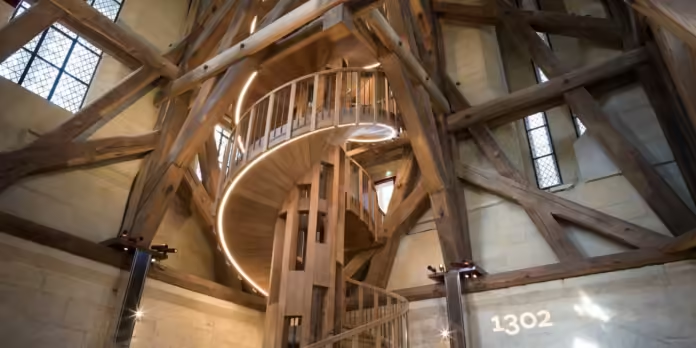
The towers of Notre-Dame de Paris reopened to the public on Friday, September 19, marking a significant milestone in the cathedral’s post-fire restoration. This reopening coincides with the European Heritage Days, allowing visitors to explore areas of the iconic monument that have remained closed since the 2019 blaze.
On April 15, 2019, a fire ravaged Notre-Dame, destroying its spire, framework, and devastating the apse and nave. Experts feared the collapse of the towers if the flames had reached the massive forged steel bells, including the 13-ton Emmanuel bell. The survival of the towers was critical in preserving the cathedral’s structural integrity.
Visitors ascending the narrow staircases of the towers are met with a tangible sense of history. The steep steps evoke the challenges faced by firefighters who braved intense heat and smoke to contain the fire.
Equipped with heavy water hoses, they fought wind-whipped flames on the north tower, ultimately preventing further destruction. Their courage remains central to the cathedral’s survival story.
The restoration of the towers involved careful assessment and stabilization of the stonework and bell structures. Specialists reinforced weakened sections while preserving original architectural features.
The reopening offers visitors a rare glimpse into both the craftsmanship of the 19th-century restoration and the meticulous modern techniques employed to safeguard the towers for future generations.
French President Emmanuel Macron inaugurated the reopened towers in a ceremonial event, emphasizing the cathedral’s cultural and spiritual significance.
“Notre-Dame is more than a building. It is a symbol of resilience, art, and French identity,” Macron said, highlighting the dedication of the restoration teams and the broader community.
The north and south towers, which house the cathedral’s historic bells, now allow visitors to view panoramic scenes of Paris. The towers offer insight into the cathedral’s bell mechanism and the engineering that has kept the centuries-old structure standing.
Among the bells, the Emmanuel bell remains a focal point, celebrated for both its weight and historic resonance. Tourism officials expect the reopening to draw significant local and international visitors, as Notre-Dame continues to be a central cultural landmark.
The reopening is also intended to raise awareness about ongoing restoration projects, including work on the spire and nave, which continue to require careful preservation.
The towers’ reopening represents not only a triumph over the devastating fire but also a celebration of France’s heritage conservation efforts. It allows visitors to appreciate the combination of historical architecture, courageous firefighting, and modern engineering that has ensured the cathedral’s survival.
With European Heritage Days providing the perfect occasion, the towers of Notre-Dame now stand as a symbol of resilience, inviting the public to witness the enduring beauty and historical significance of one of Paris’s most treasured monuments.
This article was created using automation technology and was thoroughly edited and fact-checked by one of our editorial staff members